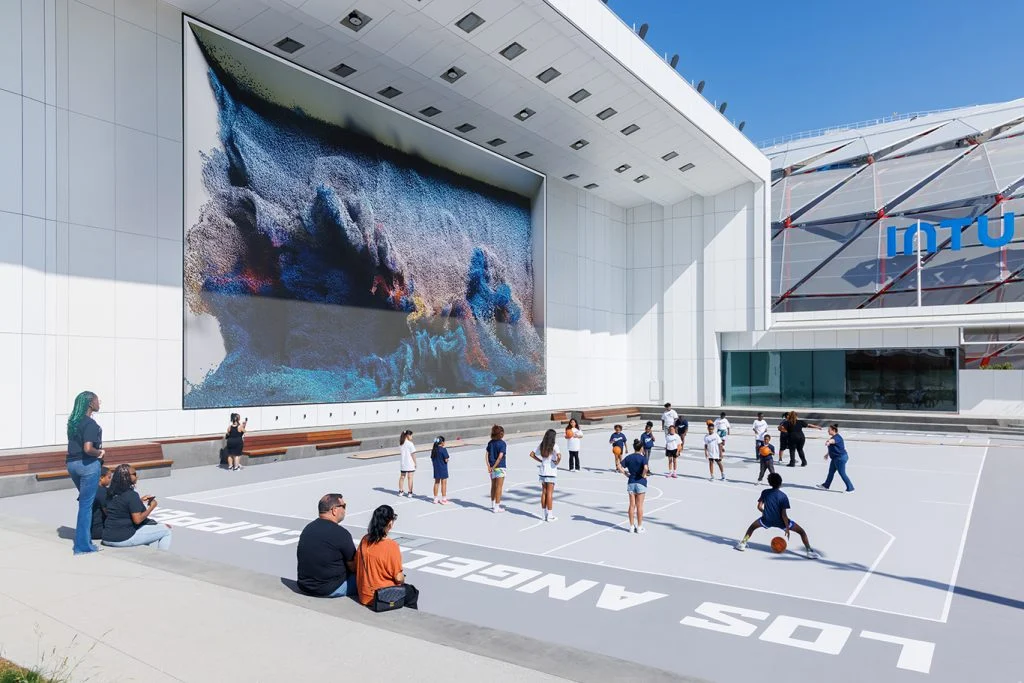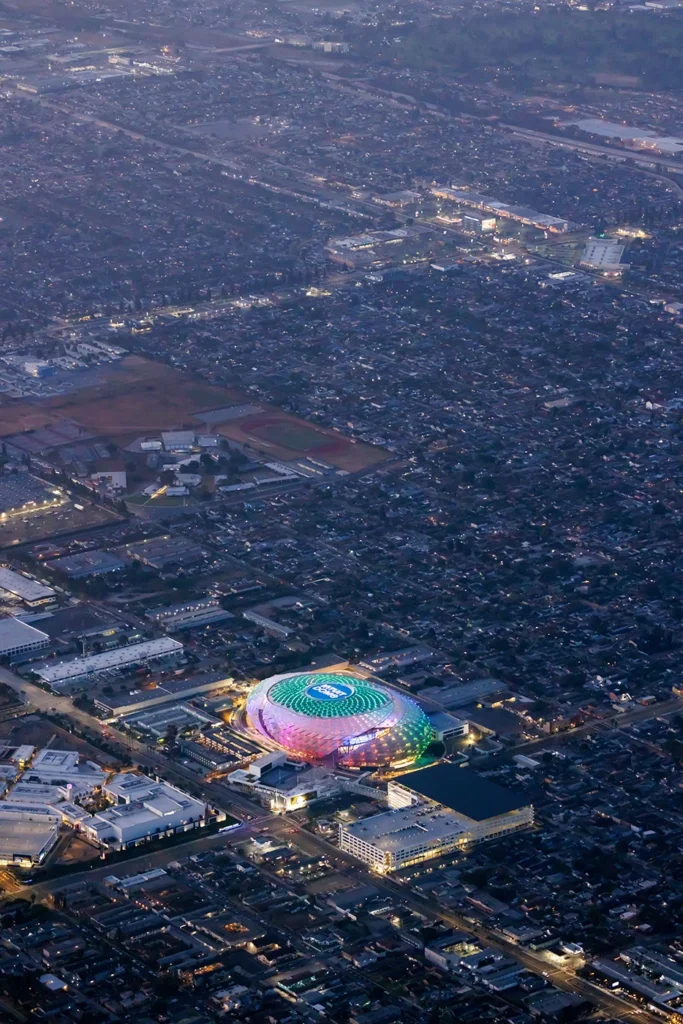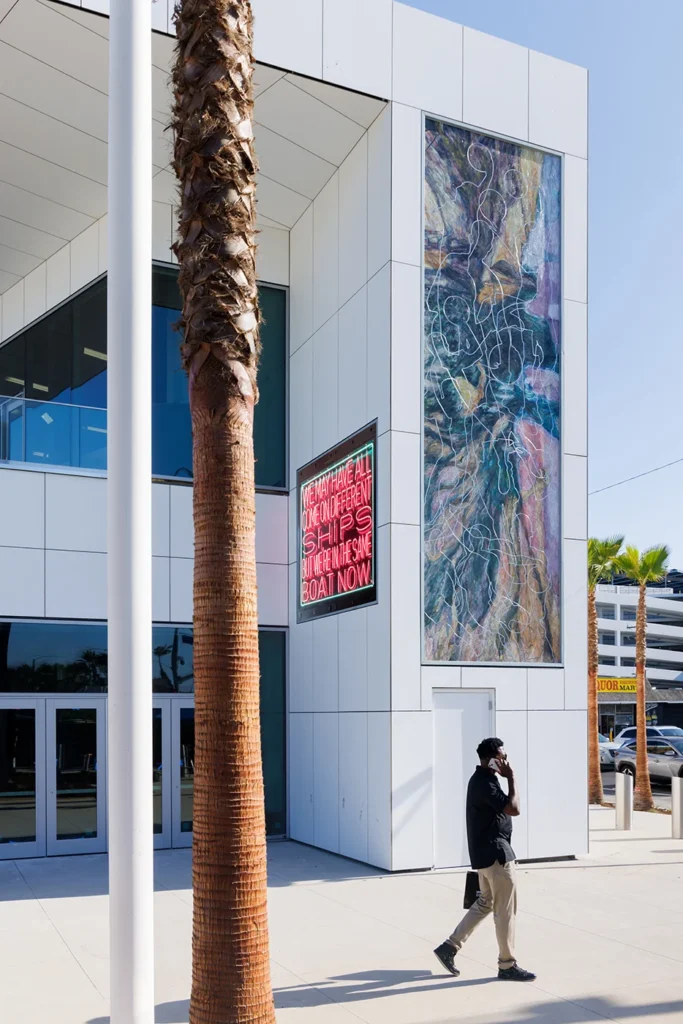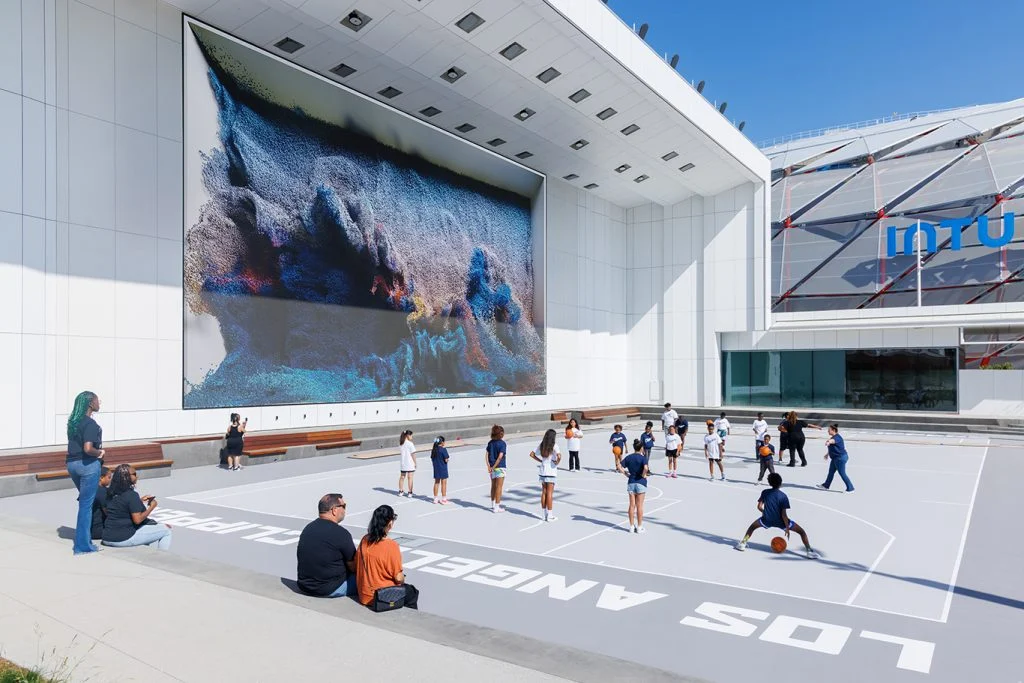
The Los Angeles Clippers’ new basketball stadium will showcase large-scale artworks that draw inspiration from the City of Angels, created by artists such as Refik Anadol, Glenn Kaino, Patrick Martinez, Michael Massenburg, Kyungmi Shin, and Jennifer Steinkamp, with an upcoming piece by Charles Gaines.
Art consultant Ruth Berson and a jury, including local community members, commissioned the artists to create pieces for the Intuit Dome, the Clippers’ new Inglewood, California arena. Gillian Zucker, CEO of the Clippers’ parent company Halo Sports and Entertainment, expressed the team’s aspiration to make the campus a hub that celebrates Inglewood’s community spirit. The venue, opening in August, will also feature photographs by Catherine Opie, courtesy of the Museum of Contemporary Art in Los Angeles.
“In commissioning these works, we started conversations with these extraordinary artists who have deep ties to Los Angeles and together reflect the make-up of the Inglewood community,” Berson said in a statement. “We showed them the model of the Intuit Dome and its campus. They chose options for their sites, and over the course of a year, they refined their ideas into the major new artworks unveiled today.”

Anadol’s contribution is a digital painting that will utilize the facility’s advanced sensors and live game data. Although he is not an avid sports enthusiast, the digital artist, renowned for his A.I.-driven works, praised Steve Ballmer, the Clippers’ owner, a Microsoft investor, former CEO, and passionate art collector.
“He is deeply invested in the Clippers and finds inspiration in the mathematical aspects of art, adding several layers of appeal to this project for me,” Anadol remarked during a video interview.
He expressed admiration for the architectural designs and blueprints of the Dome, particularly the chosen site for his artwork’s display: a massive LED screen measuring 40 feet in height and 70 feet in width, situated next to a public basketball court in a park near the stadium. This installation, he noted, would be the world’s largest A.I. data painting.

“The basketball court is public, allowing the community to play freely and open to all. It’s part of a remarkable park. I’m always working in public, striving to create experiences accessible to everyone, which is crucial to me,” he explained. “It provides alternative societal engagements for the stadium, which inspired me greatly. It’s a unifying force.”
The piece, named Living Arena, comprises four chapters, each representing data from various sources. ‘Urban Dreams’ employs flight data from Los Angeles International Airport to depict what Anadol terms ‘the sound of Inglewood.'”

In the next chapter, “Nature Dreams,” uses live weather data from Inglewood including wind direction, temperature, and humidity. He called the wind patterns in the area “super significant” and noted that there is a “beautiful wind tunnel” with gusts that change speed and direction where the stadium is located. Another chapter, “California Landscape,” highlights images from the state’s national parks.
But Anadol is most proud of “Culture Dreams,” which showcases player tracking data from Clippers games. The stadium has some of the most advanced sensors available, he said. When there’s movement inside the arena, it is visualized with a brushstroke outside of it. People will be able to tell whether the team is winning or losing.
“That was a fresh idea I never did before,” he said. “Each game will be different. This idea comes from my belief that the future of architecture will change with A.I. We won’t just think about concrete, steel, or glass. I’m trying to speculate the future of post-A.I. architecture, where it can record the dreams or the memories of the building.”

